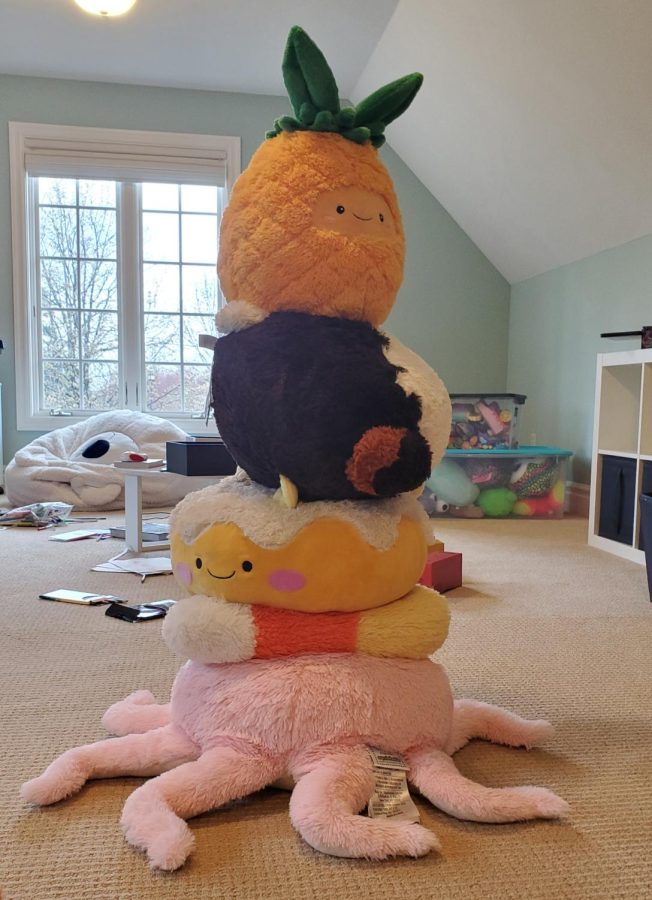A cute, hands-on stacking lesson we had to do at home for my 8th grade science class while in quaratine.
At-home studying doesn’t have to be endless textbook pages
It’s all too easy to blame shortcomings in school on teachers and outside influences, such as instruction methods that aren’t preferred and clashing personalities. However, lots of learning takes place outside of the classroom, and most likely, this is at home. Homework and studying can increase success on a test, the likelihood to go to college, and grades overall.
Even though assignments outside of school are helpful, surveys have shown that over 70% of students don’t like homework. It’s unnecessarily difficult, stressful, and at times, downright excessive. Unfortunately, homework and studying aren’t going away anytime soon, or likely ever due to the benefits they provide. Because of this, it is crucial to be maximizing the outputs for the amount of time and effort that students put into their assignments and studies.
Many students may opt for a passive studying method, whether this is re-reading the textbook or watching a quick crash-course video. Even though this way of studying is common because it is low-effort, it is relatively ineffective. Reading only has a 10% retention rate, and audio visual isn’t much better with a 20% retention rate.
A surplus of passive lessons can be avoided in school through engaging activities and projects, but this is much more difficult to recreate each night at home. Clearly, it’s not possible to build a model or have a large-scale debate or presentation at home, but this does not rule out the fact that there are active learning methods that can be applied outside of the classroom.
Clearly, it’s not possible to build a model or have a large-scale debate or presentation at home, but this does not rule out the fact that there are active learning methods that can be applied outside of the classroom.
One of the active learning options that has the highest retention rate of 90% is learning by teaching. Most students have heard this being pushed by teachers since they were in elementary school; “explain it to your little brother or say it to your dog!” Let’s be real: nobody is going to do that. A much more probable and less odd option is helping a friend study by talking through a topic. One partner will be able to review by having the matter explained to them while the other can have the information that they already knew a good deal of solidified when teaching it. Both partners can use this technique to find gaps in their knowledge.
Working with another person or group of people, in general, can be extremely beneficial since discussions regarding the topic can lead to a deeper understanding and new perspectives. They can also provide help in a more humanistic and active communication way. This is labeled as group discussion learning, which has approximately a 50% retention rate. This seems to be on the lower end of the spectrum, but it has a significantly higher retention rate than passive forms of studying.
The final form—arguably the most common and boring way—is learning by doing. While this could be through fun activities such as building and constructing sculptures and experiments, it could also take the shape of common studies in biology classes and worksheets in math. Yes, worksheets. The thing I have resisted for so long and argued against throughout my entire series.
However, worksheets are an active form of learning that are helpful in reasonable amounts. Learning by doing has approximately a 75% retention rate, but fortunately, it extends beyond just writing down and solving math problems. Building and creating structures is an active and constructive way of retaining information and engaging many parts of the brain and body. So, next time a teacher assigns a worksheet or something that takes a bit more effort to do, it is not just for busy work; it is one of the most effective ways of learning that isn’t overly complicated.
It’s tempting to become the aesthetic messy-bun study buddy who pours over their textbook for hours with a tableside coffee, but the aesthetic isn’t always practical. There is value in re-reading, but in order to make study time worthwhile, it is best to use tactics that are hands-on, or “doing,” discussion-oriented, or can teach others. This way, studying is more active and engaging, but also gives a deeper understanding of each subject.
